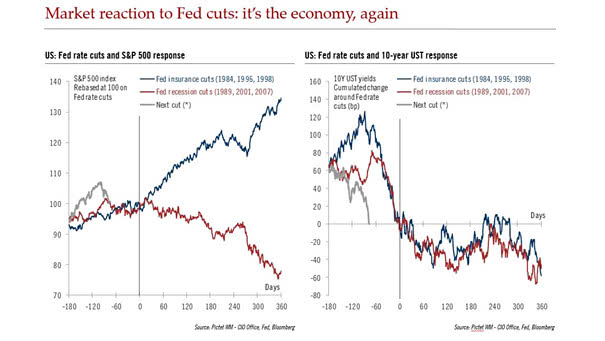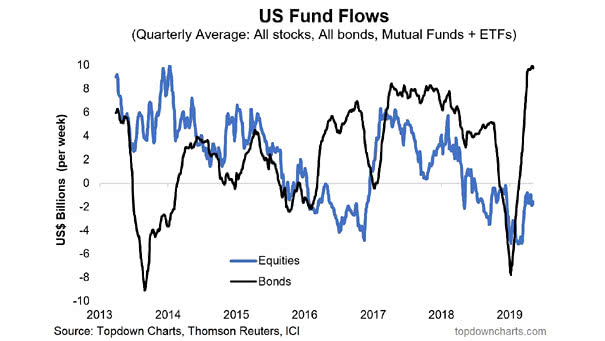Market Reaction to Fed Insurance Cuts vs. Fed Recession Cuts
Market Reaction to Fed Insurance Cuts vs. Fed Recession Cuts This chart shows the S&P 500 and 10-year Treasury Note response to Fed insurance cuts vs. Fed recession cuts. There is a big difference for equities, but not too much for bonds. Image: Pictet Wealth Management


